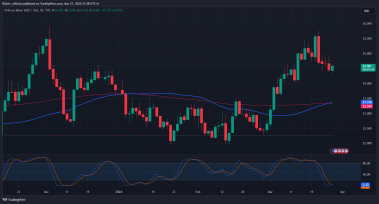Oil prices were steady on Thursday, as optimism over recovering Chinese demand was offset by U.S. oil inventories hitting their highest in months and signs the U.S. Federal Reserve could keep raising interest rates.
By 12:27 GMT, Brent crude prices had been down $12 to $84.97 per barrel, while West Texas Intermediate (WTI) crude futures had fallen $15 to $78.32 per barrel. This week, both benchmarks have increased by more than 6%.
According to PVM analyst Tamas Varga, any immediate upward potential is limited by steadily expanding U.S. commercial inventories and possibly ingrained inflation.
He said that in the second half of the year, rising Chinese demand and declining inflation will strengthen oil prices.
Because of increased production, crude oil stocks in the United States increased last week to their highest level since June 2021, according to the Energy Information Administration.
U.S. gasoline and distillate inventories also rose last week.
According to U.S. Federal Reserve officials, more interest rate increases are expected as the bank pushes for a reduction in inflation. This news sends negative signals to risk assets like oil and equities.
But when China, the world’s second-largest oil consumer, terminated more than three years of strict zero-COVID policy, the outlook for greater demand from China provided some support to oil prices.
According to ANZ bank analysts, “we expect Chinese oil consumption to rise by roughly 1.0 million barrels a day this year, with substantial growth appearing as early as late in Q1.”
“Overall, this should increase global demand by 2.1 million barrels daily in 2023.”
BP (NYSE:BP) On February 7, after a sizable earthquake hit Turkey and Syria early on Monday, Azerbaijan announced force majeure on Azeri crude supplies from the Turkish port of Ceyhan. According to BP Azerbaijan, pipeline deliveries of Azeri oil continued on Thursday.
According to the market structure known as backwardation, traders see a limited current supply as Brent’s front-month loading contract increased to a $3 premium over futures six months out.




 By:
By:





